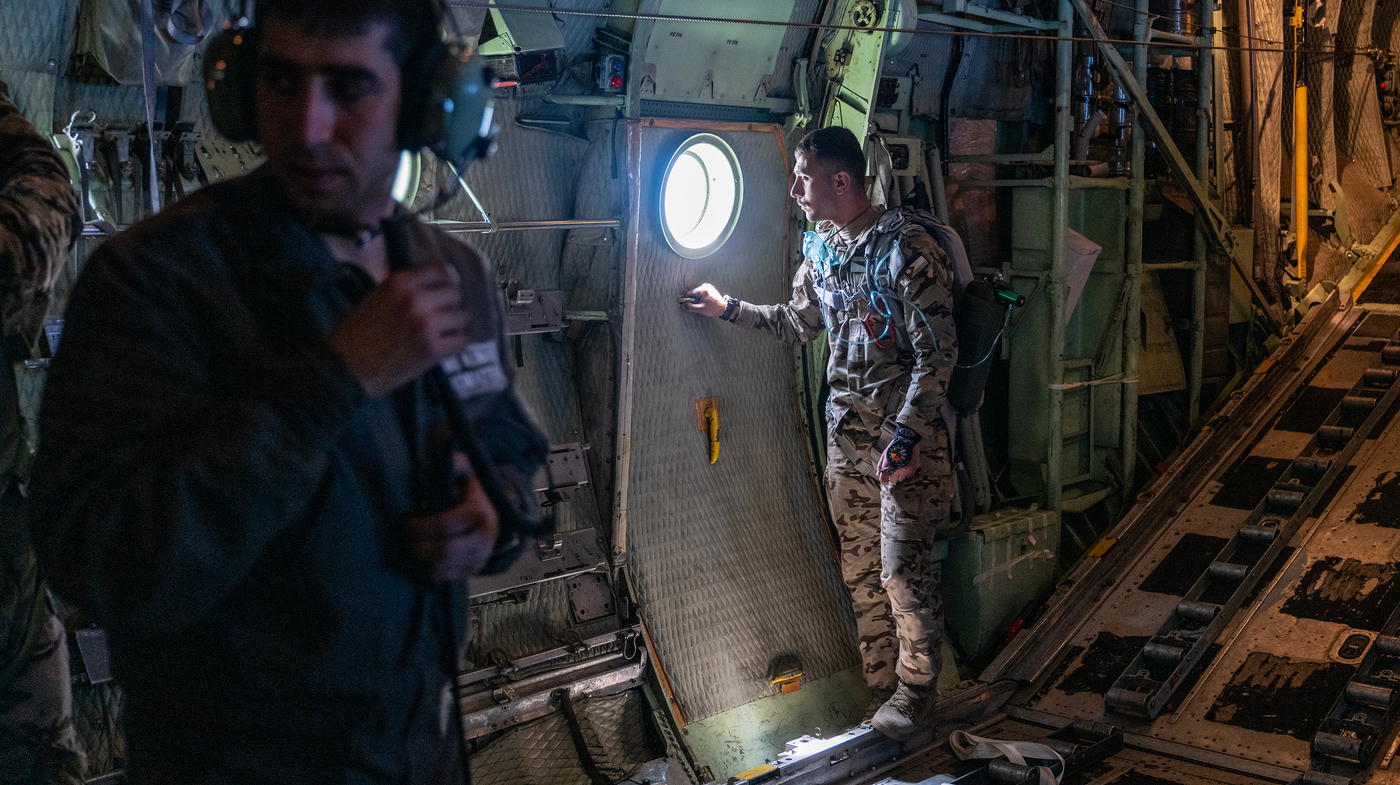
Airdropping food in Gaza is a less-than ideal means of aid delivery
Israel’s failure to provide humanitarian assistance to Gaza is the direct result of the U.N. Inefficiency: a statement from Save the Children
“At the time, I said surely it can’t get any worse and then every week I’ve been proven wrong,” said Save the Children CEO Janti Soeripto. She said the number of trucks able to cross was as low as fewer than 25 some days, with Israel rejecting many trucks from crossing and sending others back without unloading after they were allowed to enter.
Israel intends to improve access to the Rafah border crossing and reestablish another land crossing in Israel, stated the deputy representative to the U.N. Security Council.
Israel has said the lack of aid is due to U.N. inefficiency. Israel has accused employees of the U.N. agency that helps Palestinians of being involved in the attack. The claim caused funders, including the United States, to hold back funding. The European Commission on Friday said it welcomed an UNRWA investigation into the allegations and was restoring funding.
But the fact that little — or not nearly enough — aid has actually made it into Gaza has prompted several countries to use airdrops to deliver aid. According to the U.N. Office for Coordination of Humanitarian Affairs (OCHA), a quarter of Gaza’s roughly 2.2 million people are “one step away from famine.”
“This situation is the direct result of the string of unconscionable decisions taken by Israeli authorities while waging this war: a relentless bombing and shelling campaign, a complete siege imposed on the enclave, the bureaucratic hurdles and lack of security mechanisms to ensure safe food distribution from southern to northern Gaza, the systematic destruction of livelihood capacities such as farming, herding and fishing,” Doctors Without Borders said in a statement after the killings near the aid trucks.
The U.N.’s humanitarian agency, OCHA, told the U.N. Security Council this week that one-quarter of Gaza’s population, more than 576,000 people, were “one step away from famine,” with 1 in 6 children under the age of 2 suffering from acute malnutrition.
Jordan this week dropped other, waterproof boxes of rations into the sea off the Gaza coast where people waded into the water or set off on small boats to retrieve them.
On the airfield on Thursday, photographers were prevented from photographing the flag of another Arab country on one of the pallets; saying it was one of two Arab nations participating in the airdrops that day that did not want their participation publicized. On the tarmac was a Qatari cargo plane that had intended to participate in an airdrop before it developed mechanical problems.
A “a combined humanitarian assistance airdrop into Gaza” of over 38,000 meals along the coastline using C-130 aircraft was conducted by U.S. and Jordanian air forces, U.S. Central Command said in a statement.
The King Abdallah II air base is located near the city of Zarka and has a cargo area. The meals, similar to military meals-ready-to-eat for a population with little fuel for cooking, featured Arab dishes including mansaf, Jordan’s national dish made of lamb, dried yogurt and rice.
A team on the ground clears the drop zone and gives the crew green light to free the cargo. They later organize the distribution of food. There’s no evidence of anyone being on the ground to help with this process in Gaza.
Since the beginning of the war, access to the Gaza Strip has been severely limited. That’s when Hamas led an attack on Israel, killing 1,200 people and kidnapping 240, according to Israeli officials. The Health Ministry in the Gaza Strip said the Israeli response has left over 30,000 Palestinians dead.
The U.K. foreign secretary, David Cameron, said in a statement Friday that in February only half the number of trucks crossed into Gaza as did in January, terming it “unacceptable.”
She said that one Save the Children staffer reported that doctors were sending premature babies home to die because they didn’t have incubators to treat them. Aid groups say at least six children have died so far from lack of food or drink, the only sources of food available.
Gaza’s humanitarian crisis: A last resort for relief to Palestinians in Gaza, a voice of Palestinians who feels threatened by the Hamas attack
The Israeli army says it has to search every vehicle for weapons that could be used by Hamas, the group that launched an attack against Israel in October, killing 1,200 people. In response to the attack, Israel launched a military campaign in Gaza that has killed more than 30,000 civilians, according to Gaza’s health ministry.
On Friday, a Palestinian journalist in Gaza posted on X (formerly Twitter) that thousands of Palestinians desperate for food gathered at the same spot where civilians were killed on Thursday.
Israel denies that it is blocking aid but aid groups say Israel has presented so many obstacles to deliveries through the Rafah crossing from Egypt that the food shipments have slowed to a trickle.
Salem said the crowd, desperate for food, dispersed when an Israeli tank appeared. They came back and trashed the trucks after it retreated. He said that was when Israeli soldiers opened fire. Israel said it was using tanks to protect the convoy of private contractors in an aid delivery effort it was overseeing.
Like many in Gaza, Salem spends much of his day walking miles trying to find food for his three children, his wife and his mother. Even for those with money, there is no food available to buy.
Most of the infrastructure in Gaza has been damaged or destroyed by Israeli airstrikes, making it difficult for hospitals and ambulances to operate. Salem, like other casualties, was taken to hospital by horse-drawn cart.
Israel said it opened fire in self-defense and that most of the dead were trampled to death when trucks ran over them.
Salem said he was standing next to a truck when he was hit by a bullet in his leg. “I fell to the ground and there was another shot fired that hit my hand.”
Hamas, Israel: How much aid is needed to reach Gaza without airdrops, according to the International Rescue Committee in a report by President Biden
When the air force flies over northern Gaza Strip, personnel unhook chains to let some boxes out of a cargo door.
President Biden said on Friday the U.S would carry out airdrops in coming days and double efforts to open a maritime corridor.
The routes to take aid in by land rely on a number of factors, such as border crossings, availability of drivers in Gaza to receive the trucks and drive the supplies where they need to go as well as having clearance from the Israeli military for safe passage.
The International Rescue Committee said after Biden’s announcement that airdrops do not and cannot substitute for humanitarian access. The group also called for a smooth movement of humanitarian aid to Gaza.
In addition to being seven times more expensive than ground aid, a World Food program report states that airdrops require a significant amount of ground coordination, and can deliver aid in smaller amounts than truck convoys.
For one thing, the drop zones need to be designated and cleared — ideally, they’d be open area, no smaller than a soccer field — at least 210 feet by 330 feet.
The type of aid being sent is an issue. While no one argues that any aid is better than no aid, in a 2016 report written at a time when aid was being airdropped into Syria, the International Committee of the Red Cross points out that control of distribution is needed to ensure that people don’t risk their lives from eating the wrong things.
The sudden delivery of food to people who are in dire need can pose serious risks to their lives. These risks need to be weighed against delivering nothing by air, or the delay a ground distribution may incur,” it reads.

